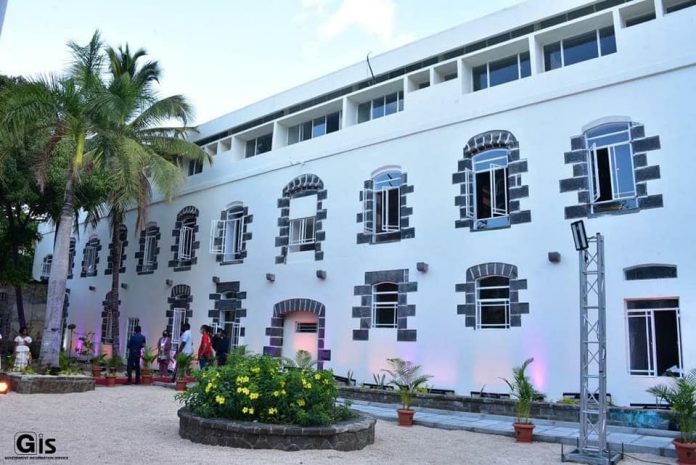Call us now:
Who We Are

The Truth and Justice Commission
The Intercontinental Slavery Museum is one of the key recommendations of the Truth and Justice Commission of Mauritius, which established public platforms in 2009 to investigate the legacy of slavery and indentured labor from colonial times to the present day. It was the world’s first truth commission specifically dedicated to slavery. The main issues studied included land ownership, racial discourse, the impact of slavery on socio-economic development, and the contract labor that followed the abolition of slavery. In 2011, the commission presented a report with 290 recommendations, one of which was to establish a slavery museum in the capital, Port Louis, to recognize the contributions of slaves to the country’s development.
In 2011, the Truth and Justice Committee recommended that the former Labourdonnais military hospital, the oldest building in Port Louis, Mauritius, be fully restored and transformed into the Intercontinental Slavery Museum (ISM). It was stated as follows: “A ‘Slavery Museum’ must be created in the capital, Port Louis, for better visibility according to the museum project guidelines. Although an ‘Interpretation Center’ is planned at Le Morne, it should reflect the aspect of Maroonage rather than slavery, which was a national phenomenon” (Truth and Justice Commission Report, 2011, vol. 1, p.19 and p.395).
ISM Mauritius LTD
ISM Mauritius Ltd was established as a specialized entity on January 20, 2020, and was incorporated as a government-owned company for the implementation of the Intercontinental Slavery Museum project.
Mission of ISM
Vision of ISM Statement
The Intercontinental Slavery Museum envisions to be ‘Site of Conscience’** devoted to a deeper understanding the history of our past and the impact of the international slave trade and slavery on Mauritius.
- The museum will commemorate the presence of hundreds of thousands of Africans, Malagasy, and Asians who were enslaved, shipped, and disembarked in Port Louis. Their contribution to the construction of Port Louis, as well as the colonial economy and society, will be highlighted in the most significant manner.
- The Intercontinental Slavery Museum will be a place of preserving the spirit of resistance and resilience that has characterized our populations since the settlement of the island.
- Truth, justice, and reconciliation will be the unifying idea of the museum.
- The Intercontinental Slavery Museum aims to be a showcase for future slavery museums, focusing on adopting best practices.
- The museum in Mauritius will play a regional role and encourage the construction of satellite museums in regions that were part of this colonial network of captive trade.
- As part of the United Nations Decade for People of African Descent (2015-2024), the Intercontinental Slavery Museum will contribute to promoting respect for African peoples, recognizing their contribution to Mauritius, and empowering the relevant communities.
- The museum’s creation itself is part of concrete measures to promote the full inclusion of people of African descent and to combat all forms of racism, racial discrimination, xenophobia, and associated intolerance.
- ISM will contribute to promoting respect for African peoples, recognizing their contribution to Mauritius, and empowering Creoles of African descent. In doing so, it will contribute to deepening the democratic spirit in Mauritius and empowering previously marginalized peoples whose history was also marginalized in the past.
Objectives and Goals
- The objectives and goals of the Intercontinental Slavery Museum aim for the following:
(a) Cultural preservation and scientific study of the phenomenon of slavery and slave trade in the Indian Ocean;
(b) Promotion of cultural exchanges, a culture of peace, and unity among peoples from multiple continents;
(c) Promotion of the development of study programs, scientific research, as well as the production of educational material;
(d) Collection, inventory, and preservation of oral traditions;
(e) Contribution to a better understanding of the transformations and cultural interactions generated by the tragedy of slavery;
(f) Promotion of human rights and a more inclusive society;
(g) Serving as an engine for the development of cultural tourism across the southwest Indian Ocean through the creation of slavery heritage trails.
The term “Site of Conscience” refers to “memory sites that engage the public in a deeper understanding of the past and inspire actions to shape a just future.”